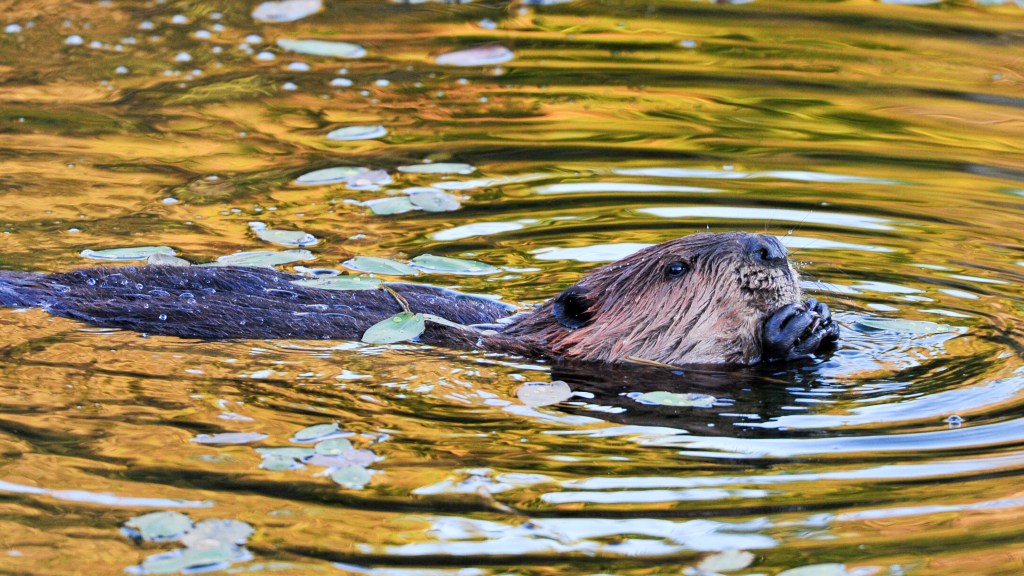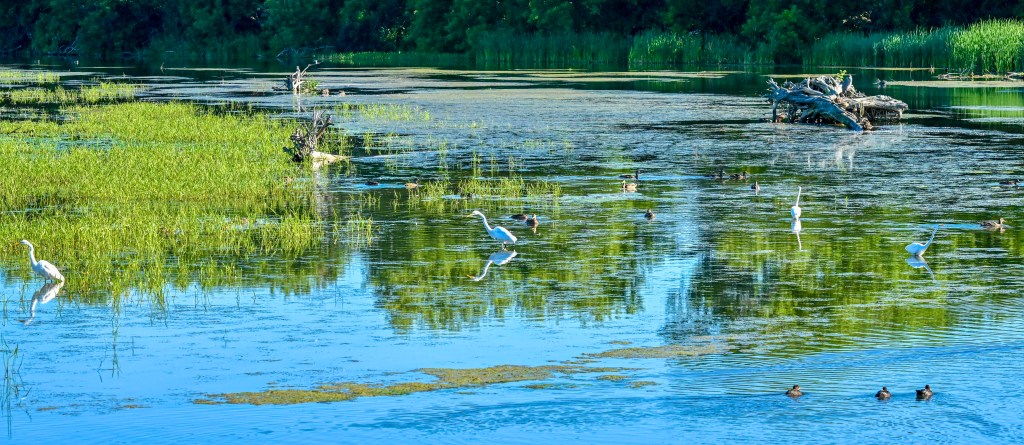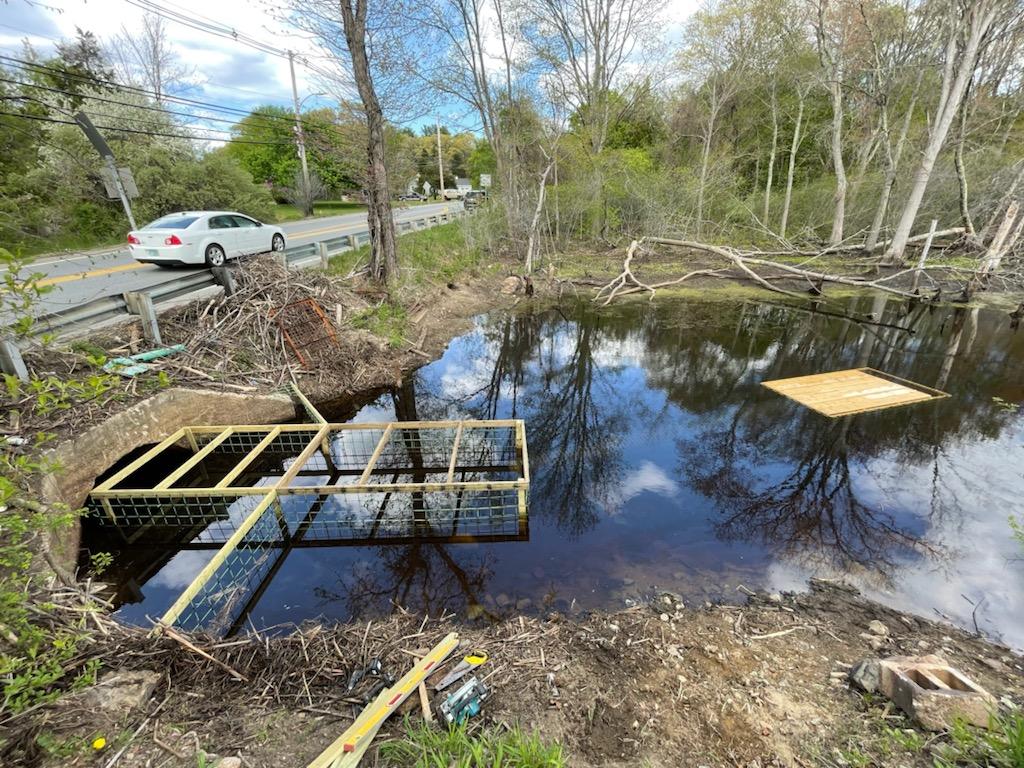
Beavers taught salmon to jump — Ancient Haida proverb
“Run, Charlie, run!” I hollered, eyeing an angry 40-pound beaver chasing me across a wet meadow in June 1989. Maine Game Warden Charlie Davis and I had captured the beaver because it had plugged a culvert, flooding a low-lying public road in Monson. Instead of entering a Borestone Mountain Audubon Sanctuary stream, the released beaver attacked.
The frightened animal, of course, didn’t understand we had saved its life by live-trapping and moving it. Unlike a dozen “nuisance” beavers I’d previously handled, the pugnacious one on my heels had repeatedly lunged at me — bearing its long, sharp incisors — from inside a Hancock Live Beaver Trap.
Charlie, resembling an offensive lineman wearing an undersized green warden uniform, sprinted alongside me as if our lives were at stake. After biting through the heel of my right hip boot, the beaver waddled toward the stream and growled once more. Its message was unmistakable: “Back off, you SOB!” That evening I nursed my heel bite wounds with warm, soapy water, mended my boot with a tire repair kit, and toasted the triumphant beaver with a shot of bourbon.
The following day, Davis introduced me to a classroom of wardens, “Fellas, please join me in applauding Ron Joseph, our beaver adoption program biologist. Yesterday, while being chased by a feisty beaver, he broke the Guinness World Sprint Record in hip boots.”
Although beavers don’t enjoy the same public adulation as moose and loons, I’ve been enthralled by them since childhood after watching a beaver family build a crescent-shaped mud and stick dam across a brook on my grandparents’ dairy farm. The 2-acre forested wetland teemed with frogs, wood ducks, herons, bitterns and formidable giant water bugs. The mini-wildlife oasis abruptly changed one winter when local trappers caught the entire beaver family. Absent of beavers the dam disintegrated and the flowage disappeared, along with the wetland’s wildlife.
In 1978, when I began my career, state wildlife technician Jimmy Dorso, a fellow beaver aficionado, installed welded wire fences in front of culverts he spent hours unplugging with a four-prong potato hoe. When beavers quickly rebuilt their dams against the fencing, Dorso threaded perforated PVC pipes through the fencing to regulate water levels. It was a win-win solution. Wetlands remained intact, and municipal and state highway crews didn’t need to constantly unplug culverts.
In 2006, in honor of Dorso’s dedication to wildlife conservation, the Maine Department of Inland Fisheries and Wildlife renamed Ruffingham Meadows the James Dorso Wildlife Management Area — a magnificent 674-acre wetland along Route 3 in Montville and Searsmont.

When Europeans arrived in North America, the continent supported an estimated 400 million beavers. For two centuries beavers were trapped for their valuable fur, which was fashioned into hats sold by furriers in east coast cities and Europe. As unregulated trapping led to exploitation and sharp population declines, dozens of beaver trappers moved west of the Mississippi River. The earliest settlements in western North America sprang up near trading posts. Throughout much of the 19th century, beaver pelts were the main currency in trade between Native Americans and fur companies. But by 1900, the continent’s beaver population had plummeted to as few as 100,000.
In Maine, as beavers approached elimination in the state, a law was passed in 1899 prohibiting beaver trapping. Other states enacted similar measures. The shift from fur to silk hats reduced the demand for beaver pelts and led to a population recovery.
Today, as North America’s beaver population approaches 15 million, the animal is being reintroduced into formerly occupied terrain. Idaho led the way in 1948 by parachuting 76 beavers in wooden crates into roadless mountainous regions dotted with meadows and streams. The crates opened on impact. Those animals and their progeny, coupled with beaver reintroductions in other western states, resulted in the construction of hundreds of dams, restoring wetlands and willow thickets, benefiting moose and other wildlife. Trees that died from rising water levels became nesting sites for woodpeckers, waterfowl and other cavity nesters.
Beavers also are being relocated in Maine. Fencing and PVC pipe installations aren’t always feasible, especially when apple orchards, corn fields, trailer parks, logging roads and low-lying public roads are flooded by beaver dams.
Although the tide of public opinion is shifting from beaver haters to beaver believers, Mark Brown — a licensed forester, certified logger, and farmer — has mixed feelings. “I don’t mind losing a few trees to beavers,” he once told me on his 400-acre woodlot in Vassalboro, “but I can’t allow them to flood stands of sawlog quality red oak.”
Since his 13-acre beaver flowage supported one of Maine’s largest inland great blue heron rookeries, I offered to help him. “I enjoy wildlife too,” he added. “I welcome bird watchers and hikers. But I earn my living cutting and selling firewood and sawlogs.”
Standing next to a 4-foot-high x 100-foot-wide beaver dam on Brown’s woodlot, I recommended that he hire Skip Lisle, owner of Beaver Deceivers International, a company specializing in constructing water stabilization devices. As if on cue, a beaver swam in front of its dam and slapped its tail to warn family members. An osprey, nesting in an abandoned heron nest, also objected to our presence by whistling. “I have money in my budget,” I added, “to pay for Lisle’s services.”

After Lisle earned a master’s degree in wildlife ecology from the University of Maine, the Penobscot Indian Nation hired him to remove beaver dam-plugged culverts and to maintain wetlands on the tribe’s 150,000 acres. He installed dozens of beaver deceivers. Now stationed in Vermont, Lisle’s beaver business is booming. Since 2010 he’s worked in California, Oregon, Washington, Montana, New Mexico, Colorado, Wyoming and Florida. He’s also installed beaver deceivers in Sweden, Lithuania, Poland, England, the Netherlands and Norway.
“A few years ago the National Park Service hired me to protect a culturally significant hot springs in Alaska’s Bering Land Bridge National Preserve,” he said. “The Park Service even hired a float plane to deliver my beaver deceiver supplies to the remote site.”
The custom-designed beaver deceiver Lisle built on Brown’s property was a trapezoidal-shaped culvert fence of wood and wire. “Since each site is different,” Lisle said, “I vary the construction to best suit the need.” Each design eliminates beaver dams in culverts. His trapezoidal fence forces beavers to build dams in a direction opposite the culvert, contrary to their nature.
“When you think about it,” Lisle said, “only two species are capable of profoundly altering their environment: beavers and humans. And only one alters it to the benefit of other species. Most people are familiar with beavers, but they probably don’t understand their critical ecological role. By us simply working with beavers instead of killing them, the animals are restoring ecological integrity to landscapes, one flowage at a time.”
Ron Joseph of Sidney is author of the memoir Bald Eagles, Bear Cubs, and Hermit Bill: Memories of a Maine Wildlife Biologist, published by Islandport Press